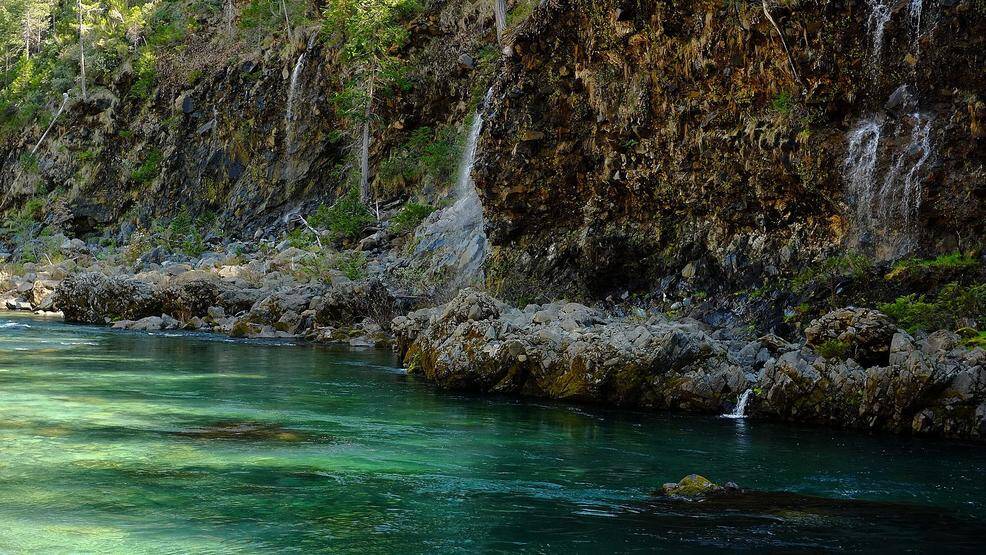Wild Side: Get the last bit of summer on the Smith River

Now that the smoke is mostly clear (fingers crossed!), everyone is squeezing out as much summer as they can. If you are one of those trying to make up for the lost summer, I highly recommend you check out the Smith River.
Located in far northwest California, the Smith is a national gem. The river and its tributaries are home to stunning clear-blue waters and healthy runs of wild salmon. The Smith has this reputation because it is one of the largest undammed river basins remaining in California.
The Smith River National Recreation Area was designated in 1990, and it includes the entire Smith River watershed in California. Due to a lack of political support, the sizable portion of the Smith watershed (about 60 square miles) in Oregon was not designated an NRA (boo). The NRA is crucial for protecting an area like the Smith. It means that recreation is emphasized, while mining and other activities that would threaten the river basin are avoided.
The Smith is named after the explorer Jedediah Smith (1799-1831), but like most American rivers, its history runs deeper than since it was “discovered.” Tribes, including the Tolowa Dee-ni’ and Elk Valley Nations, have a vital and age-old relationship to the river basin. The Tolowa call the river “xaa-wvn’-taa-ghii-li,” and the tribes are deeply connected to the cultural and ecological management of the watershed.
I have been lucky enough to work recently in the Smith River Collaborative to help guide a few projects in the NRA. Along with the tribes, the Smith River Alliance, Del Norte County, and others, the partners are charting a course of forest restoration and recreational improvements.
One project is maintaining fire breaks around the town of Gasquet, California. Another project called “Little Jones” is carrying out restoration thinning of forests degraded by past logging and the removal of frequent fire. The collaborative is also working to repair the road system to save the Port Orford Cedar trees from a disease spread by vehicles and to improve wild salmon habitat.
Since the Oregon portion of the North Fork Smith was excluded from the NRA, it is still vulnerable to mining and other threats. A large strip mine proposal has been pushed in the past several years but a community-wide effort at the end of the Obama Administration led to a temporary ban on new mining. Now there are concerns about the mining proponent pushing their plans in the Trump administration, but local opposition to these plans is strong.
The Smith River is often overlooked as a destination, but it is a phenomenal area to explore. Many people pass it by on their way to coastal beaches or as they head to giant groves of redwoods further west. But trust me, the Smith River is worth a visit.
There are tons of amazing trails and and riverside beaches to swim and explore along the Smith. If you ever get a chance to boat on the Smith, do it. It is a trip of a lifetime. But, you have to be ready to jump on an early season adventure as the water levels are only good enough for rafting in the springtime. There are local guide companies like Redwood Rides that you should contact for more information.
You don’t need a guide to hike in the Smith NRA. One of my favorite hikes in the NRA is the Old Kelsey Trail, which is a moderate hike with a river crossing and about seven miles one way. This is part of the Kelsey pack trail that was used by native peoples and then became an important pack trail between the coast and Yreka, California, in the mid-late 1800s.
Getting there: Take Highway 199 to 7 miles west of the small town of Gasquet. Take a left to cross the middle and south forks of the Smith River on South Fork Road. Stay left and continue about 9 miles on South Fork Road to the western trailhead for the Old Kelsey Trail. Stop by the Ranger Station in Gasquet for maps and more information during regular business hours.
Joseph Vaile is executive director of the Klamath-Siskiyou Wildlands Center (KS Wild, 541-488-5789, www.kswild.org). His Wild Side column appears every three weeks.

Comments are closed.